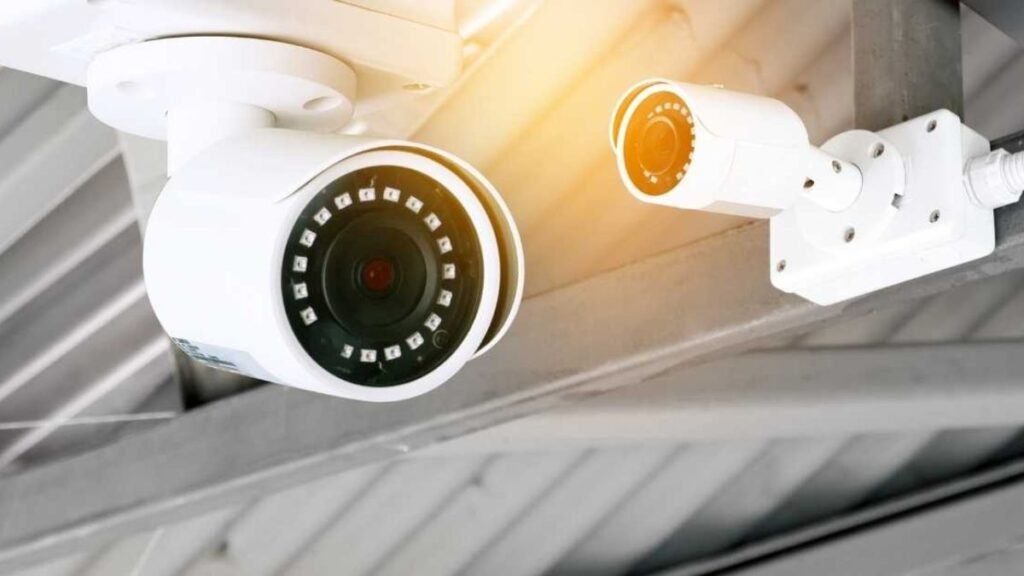Key Takeaways:
- Understand the importance of security camera installation for retail environments.
- Learn the steps to install security cameras in a store effectively.
- Discover how to optimize your surveillance system for maximum efficiency and coverage.
- Gain insights on camera maintenance and future-proofing your security measures.
Table of Contents
The Importance of Security Cameras in Retail
In today’s retail environment, security cameras safeguard stock and staff while enhancing operational efficiency. They are a significant deterrent for theft and vandalism, making them a cornerstone of any effective loss prevention strategy. By capturing and recording every transaction and interaction, these devices ensure that any suspicious activity can be promptly addressed. Moreover, in many cases, they provide invaluable data that can be used to optimize store layouts and improve customer service by analyzing shopper behavior. Implementing a strategic professional commercial security camera installation adds a layer of proficiency to these systems, tailoring solutions to meet unique security needs while ensuring full compliance with privacy laws and company policies.
Selecting the Right Cameras for Your Store
Choosing the right type of security camera is pivotal in creating an effective surveillance system. Factors such as camera resolution, field of vision, and technological features like infrared night vision must be tailored to the layout and size of the store. Dome cameras, known for their non-invasive and subtle appearance, are perfect for indoor surveillance of expansive areas like sales floors, thanks to their wide-angle lenses and tamper-resistant designs. With their distinct cylindrical form, bullet cameras provide excellent clarity and are ideal for focusing on specific points such as entrances or checkout areas. Meanwhile, PTZ cameras offer dynamic coverage, capable of panning, tilting, and zooming to cover larger spaces or automatically follow movement. This diversity ensures comprehensive surveillance that can adapt to various needs and environments.
Planning the Layout and Placement
The placement of security cameras is as crucial as selecting the right type. Effective planning begins with a detailed store layout analysis, identifying vulnerable spots and high-traffic areas that require constant monitoring. Entrances and exits should be prioritized to capture clear images of everyone’s entry and exit. Points of sale deserve special attention due to the direct handling of cash and financial transactions. Storerooms and other sensitive areas where high-value items are stored should also be monitored closely. Including visible and covert cameras can deter potential wrongdoers while maintaining a watchful eye on high-risk zones. Mapping out a comprehensive plan maximizes coverage and minimizes blind spots, ensuring a layered security approach.
Step-by-Step Installation Process
Prepare the Equipment
Start by gathering all equipment and verifying its conditions—this includes cameras, mounts, cables, recording devices, and necessary tools such as drills and cable connectors. Double-checking these items ensures a smooth installation process.
Install the Mounts
Secure camera mounts at identified locations, using appropriate fasteners to ensure they are attached firmly. This step is critical for ensuring the cameras can withstand environmental factors and tampering attempts.
Mount the Cameras
Once the mounts are in place, attach the cameras, adjusting them to cover specific areas efficiently as outlined in your planning. Secure the cameras to prevent any accidental or intentional adjustments.
Run and Conceal Cables
Carefully lay out the cables, considering the best routes to minimize visibility and disruption to operations. Use conduit or trunking to conceal the cables for a professional finish and added protection against interference.
Connect to Power and Network
After installation, connect the cameras to power and, if necessary, to the store’s network system for real-time monitoring. Ensure all connections are secure to prevent disconnections and data loss.
Configure the System
Config the camera systems to finalize the installation. Fine-tune settings like resolution, frame rate, and motion detection parameters. Customize user access and alerts to enhance functionality and response efficiency.
Optimizing Camera Performance
Regular optimization of your security camera system can greatly enhance its effectiveness. Periodic reviews and updates of the camera settings may be necessary to adapt to changes in the store environment or layout. Surveillance analytics tools can monitor camera performance, offering insights into repositioning cameras for better coverage or adjusting settings for improved image clarity. Additionally, firmware updates should be conducted regularly to ensure cameras run on the latest software, benefiting from bug fixes and enhanced security features. Keeping abreast of technological advances helps maintain a responsive and effective security presence in retail.
Maintenance and System Checks
Like any vital infrastructure, security camera systems require routine maintenance to assure continued reliability and performance. Regular system checks should include cleaning cameras for optimal video clarity, inspecting wiring for wear or damage, and verifying the integrity of all hardware connections. Scheduling these checks bi-annually or quarterly helps detect and rectify issues before they become major problems. Proactive maintenance ensures that surveillance is uninterrupted and consistent, thus maintaining the security integrity of the store. Should any components be outdated or malfunctioning, timely repair or replacement will help keep the security system at peak operational capacity.
Future-Proofing Your Security System
As retail environments and threats evolve, so must the tools used to secure them. Future-proofing your security system involves integrating scalable solutions that can adapt to technological advancements. Keeping an eye on industry trends, such as integrating artificial intelligence and machine learning for predictive analytics, not only enhances current operations but also positions the business to respond swiftly to future challenges. Upgradability should also be part of the plan, ensuring that your security system can meet those challenges head-on without a complete overhaul as new technologies and threats emerge. By leveraging modern technology wisely, businesses can ensure robust protection now and into the future.
